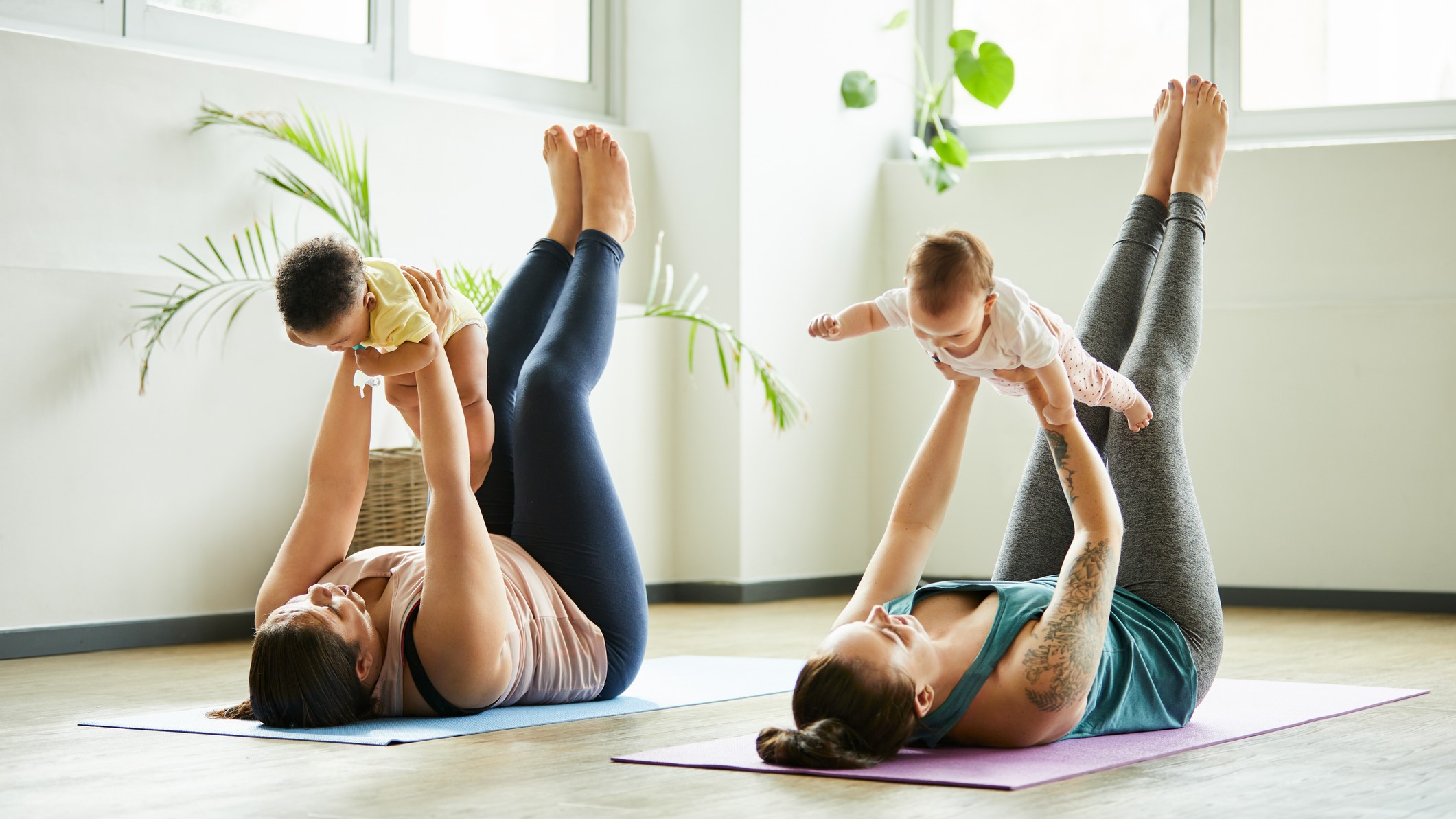Forget sit-ups — these are the best exercises to re-build your core after a baby
Here are the exercises I used to work my deep core

As a fitness editor, I’ve spent the last decade writing about how to build a strong core, how to sculpt muscles, how to run faster and the best tech to help you monitor your progress. I’ve run five marathons, and when I became pregnant, I was adamant I’d be back in my running shoes and taking on the London Marathon three months after giving birth. How naive I was.
I was lucky enough to have an uncomplicated pregnancy and a "normal" delivery. My doctor cleared me for light exercise after a couple of weeks, and I was able to run again at six weeks. My mid-section, however, took far longer than I anticipated to recover.
During pregnancy, your abdominal muscles — the two bands of muscle that run down the front of your stomach, stretch to accommodate your growing baby. At the same time, your organs shift and your ribcage moves up and out. The widening of the ribcage can make it harder to engage your deep core and pelvic floor muscles post-birth. What’s more, your hormones are still making your connective tissue more elastic, especially if you’re breastfeeding.
Your body just grew a human, so remember to give yourself a break and some time to recover before diving into exercise. It’s also important to ensure you get the green light from your doctor or midwife beforehand.
Here’s the exercises I used to work my deep core post-partum
It’s difficult to know where to start when it comes to rebuilding your core, especially in the depths of newborn sleep-deprivation haze. I turned to the Build and Burn postpartum program, which starts with the basics of engaging your pelvic floor muscles. I spent a few weeks doing this before moving on.
A post shared by Amanda & Ashley | Rosey Times Two (@roseytimestwo)
A photo posted by on
Here’s some of the exercises I used:
Bear hold rows (45 seconds on, 15 seconds off):
Sign up to get the BEST of Tom's Guide direct to your inbox.
Get instant access to breaking news, the hottest reviews, great deals and helpful tips.
To do a bear hold row, start in a tabletop position, with your knees stacked underneath your hips and your hands underneath your shoulders. Hold one of the best adjustable dumbbells in each hand. Engage your core and pelvic floor muscles and lift your knees a few inches off the floor, then row one arm, then the other, up to the ceiling, keeping your core lifted. If this is too difficult, drop the weights.
Chest press to glute bridge (45 seconds on, 15 seconds off):
For this exercise, start by lying on your back, with your feet pressed into the floor, and a dumbbell in each hand. Engage your core, and peel your spine off the floor, raising into a glute bridge, squeezing your glute muscles at the top. As you do this, complete a chest press, pressing both dumbbells up towards the ceiling. Reverse the movement and repeat.
Heel tap downs (45 seconds on, 15 seconds off):
Start by lying on your back, with your lower back pressed into the mat. Place your hands behind your head. Engage your core and raise both legs up into tabletop position, with a 90-degree bend in your knees. Ensuring your lower back remains pressed into the floor, tap one heel down to the floor, then the other, moving slowly and with control.
Elevated bear holds (45 seconds on, 15 seconds off):
For this exercise you’ll need a block or chair to lean your bodyweight on. When exercising at home, I used a footstool. Kneel in front of the box and lean forward so both elbows are resting on it. Engage your core and lift your knees off the floor, hold here for a few seconds, before tapping your knees down on the mat and repeating.
What are the benefits?
All of these exercises target the deep core muscles of your mid-section. Sit-ups, on the other hand, work the rectus abdominis, or the six-pack muscles. Sit-ups, planks, and mountain climbers are not recommended for at least 12 weeks after childbirth, as they can put pressure on the lower abdominal wall and pelvic floor muscles, which are still recovering.
It’s important to work on your core after giving birth to regain strength and stability, especially if you plan on returning to exercises like running or weight lifting. Your core has been through a lot during the nine months of pregnancy, so spending some time rebuilding your strength can help you avoid injuries, and protect your back as you carry your growing baby.
More from Tom's Guide

Jane McGuire is Tom's Guide's Fitness editor, which means she looks after everything fitness related - from running gear to yoga mats. An avid runner, Jane has tested and reviewed fitness products for the past five years, so knows what to look for when finding a good running watch or a pair of shorts with pockets big enough for your smartphone. When she's not pounding the pavements, you'll find Jane striding round the Surrey Hills, taking far too many photos of her puppy.
